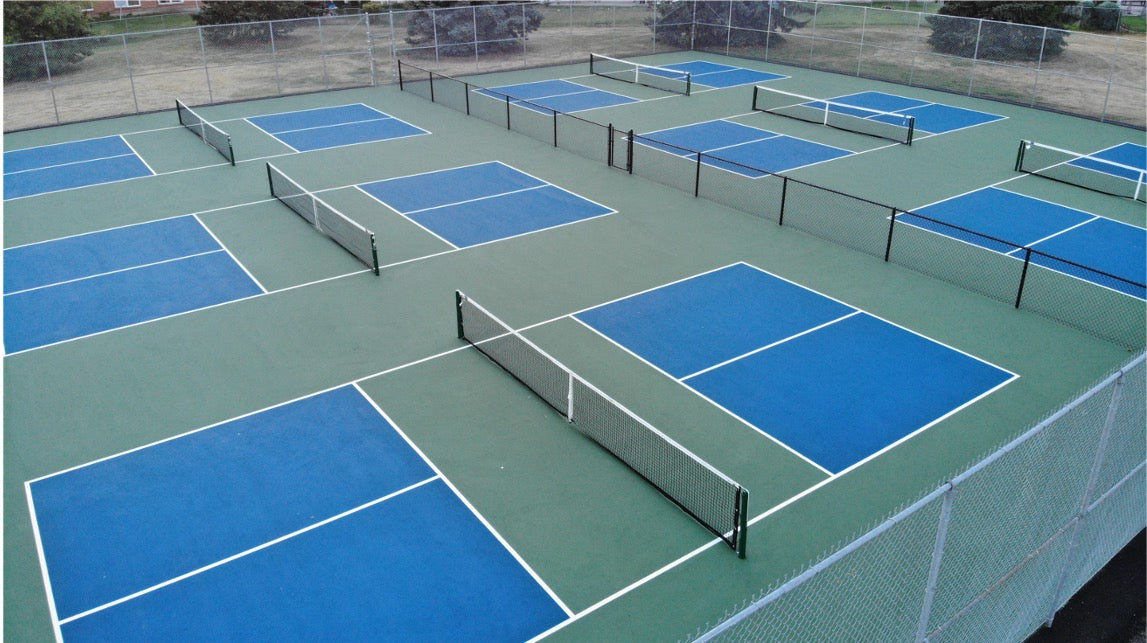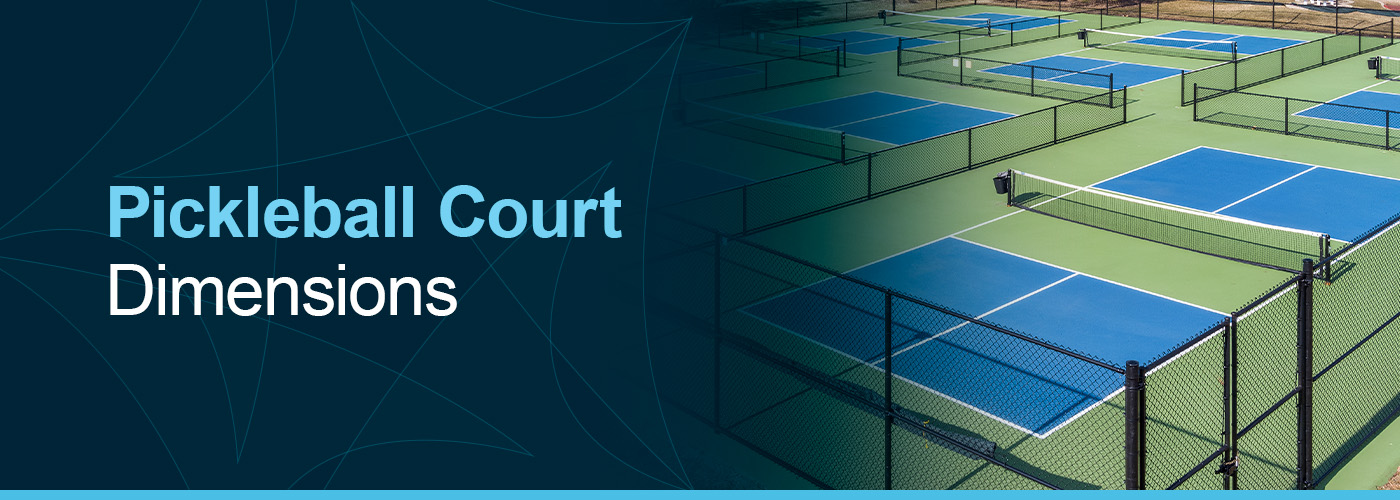How Local Laws Influence Your Pickleball Court Construction Plans
How Local Laws Influence Your Pickleball Court Construction Plans
Blog Article
Navigating Regulations for Pickleball Court Construction in Your Area
Building a pickleball court in your location requires a nuanced understanding of different neighborhood policies, consisting of zoning laws, building authorizations, and safety requirements. Involving with neighborhood authorities and the neighborhood is crucial for making sure compliance and promoting assistance.
Understanding Regional Zoning Legislations
When considering the building of a pickleball court, comprehending neighborhood zoning laws is vital to ensuring compliance and preventing possible lawful issues. Zoning policies determine just how land can be made use of and frequently include specs associated to entertainment facilities. These legislations can vary substantially by district, impacting elements such as court placement, lighting, sound, and dimension degrees.
Before starting building, it is important to speak with the local zoning board or planning department to ascertain the specific regulations that put on your residential property. Specific zones may limit entertainment tasks, while others may require specific licenses or adherence to certain guidelines. It is additionally essential to think about problems, which determine how much frameworks should be from residential or commercial property lines or other structures.
Furthermore, private developments, such as home owner organizations (HOAs), may enforce their own rules pertaining to the building and construction and use of pickleball courts. Understanding these laws can stop costly alterations or litigation down the line. Engaging with regional stakeholders and community participants can offer valuable understandings and foster support for your task, guaranteeing that it aligns with the area's demands and expectations.
Acquiring Necessary Building Allows
Exactly how does one navigate the intricacies of acquiring essential building authorizations for a pickleball court? The process starts with understanding regional regulations and demands stated by local authorities. Typically, you will certainly require to submit a thorough site plan that lays out the proposed court measurements, products, and layout. This plan needs to abide by zoning legislations and any kind of specific guidelines relating to recreational facilities.

As soon as permits are acquired, it is crucial to abide by any kind of inspection routines and demands throughout the building and construction phase. Preserving interaction with neighborhood authorities will certainly help with a smoother approval process and help prevent possible troubles. By thoroughly preparing and understanding the permitting landscape, you can effectively browse the intricacies associated with creating a pickleball court while continuing to be compliant with all local policies.

Assessing Environmental Effect
An extensive analysis of environmental effect is essential when preparing the construction of a pickleball court. This analysis helps determine possible effects on regional ecosystems, water resources, and area visual appeals. Trick factors to think about consist of website selection-- guaranteeing that the court is not developed on environmentally delicate land, such as marshes or environments for jeopardized varieties
Dirt security and drainage patterns should be evaluated to stop disintegration and water pooling, which might adversely influence surrounding greenery and wildlife. Furthermore, the option of products is critical; choosing green and sustainable options reduces environmental harm.
The application of efficient stormwater administration methods is one more important element, as it assists reduce overflow and sedimentation. Engaging with local environmental agencies can offer important insights into regulations and best techniques details to your location.
Last but not least, neighborhood input can be helpful in recognizing any type of regional environmental concerns and cultivating assistance for the task. By performing a detailed ecological effect evaluation, stakeholders can ensure that pickleball court construction straightens with lasting practices and adds favorably to the neighborhood's ecological wellness.
Abiding By Security Standards
Making certain conformity with safety criteria is vital for the successful construction and procedure of a pickleball court. Abiding by recognized security laws decreases the threat of injuries and accidents, making certain a protected environment for gamers.
Key security standards consist of proper court measurements, surface area materials, and lights demands. The court has to satisfy the main dimensions of 20 feet large by this website 44 feet long for doubles play, with proper buffer zones to avoid injuries from wayward balls. Pickleball court construction. The surface needs to be constructed from non-slip products to enhance traction and lower the likelihood of drops
In addition, lighting needs to suffice for evening play, supplying consistent lighting to avoid darkness that can prevent visibility. Regional building ordinance might also dictate certain needs for fencing and web elevation to make certain player safety and stop unapproved accessibility to the court area.
Regular assessments and upkeep are necessary to support these requirements gradually. By focusing on safety and security conformity, court owners not only safeguard players however likewise promote a favorable track record within the area. This dedication to safety and security can encourage greater involvement and pleasure of the sport, eventually adding to its growth and sustainability.

Engaging the Area in Preparation
Area participation in the drawing board of pickleball court building and construction can considerably improve the task's total success. Engaging local citizens and stakeholders cultivates a feeling of ownership and encourages collective decision-making, which can cause more comprehensive support for the initiative.
To efficiently include the area, coordinators need to initiate public meetings or workshops, offering a platform for locals to voice their viewpoints and choices concerning area, design, and facilities. Surveys and feedback forms can also be utilized to gather insights from a larger audience, ensuring that diverse perspectives are considered.
Moreover, creating an area board of advisers can promote recurring conversations and address worries throughout the planning process. This board can include reps from numerous demographics, such as regional institutions, leisure organizations, and neighborhood organizations, therefore magnifying neighborhood representation.
Effective interaction is crucial; updates regarding the project should be regularly shared using e-newsletters, social media, or local notices. By prioritizing neighborhood involvement, planners can grow enthusiasm, minimize prospective opposition, and develop a pickleball facility that truly reverberates with regional worths and requirements. This collaborative strategy not only improves the job but likewise enhances community connections.
Conclusion
In verdict, navigating the complexities of pickleball court building requires a thorough understanding of local policies, including zoning legislations, structure authorizations, and safety and security standards. By adhering to these guidelines and fostering partnership, effective application of pickleball courts can be attained, advertising entertainment possibilities and area health.
Constructing a pickleball court in your area needs a nuanced understanding of various regional regulations, including zoning regulations, building permits, and safety standards.When taking into consideration the building and construction of a pickleball court, understanding local zoning laws is important to making sure other compliance and avoiding Read More Here potential lawful concerns. By extensively preparing and recognizing the allowing landscape, you can effectively navigate the intricacies entailed in building a pickleball court while staying compliant with all neighborhood laws.
In final thought, navigating the complexities of pickleball court building and construction requires an extensive understanding of local regulations, consisting of zoning legislations, building authorizations, and security standards. By sticking to these standards and cultivating partnership, successful execution of pickleball courts can be accomplished, promoting entertainment chances and community health.
Report this page